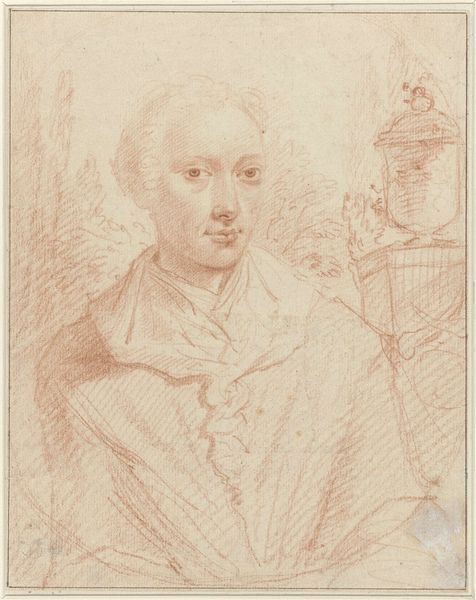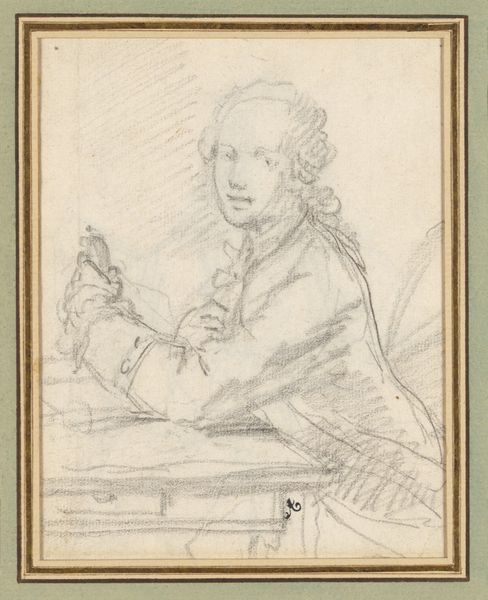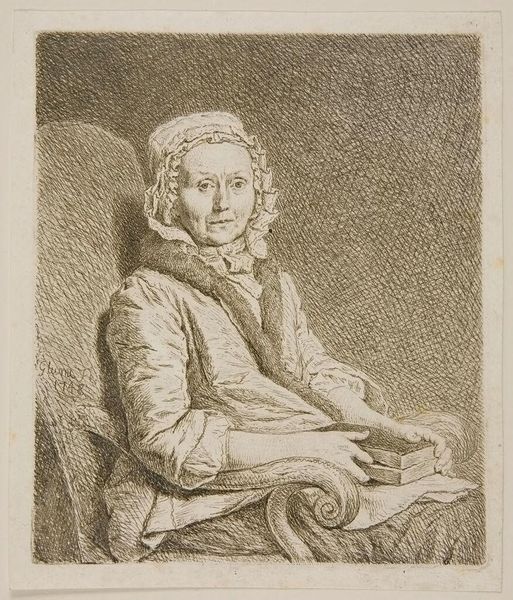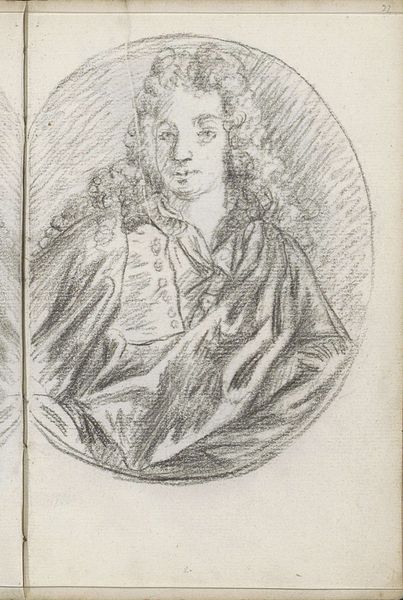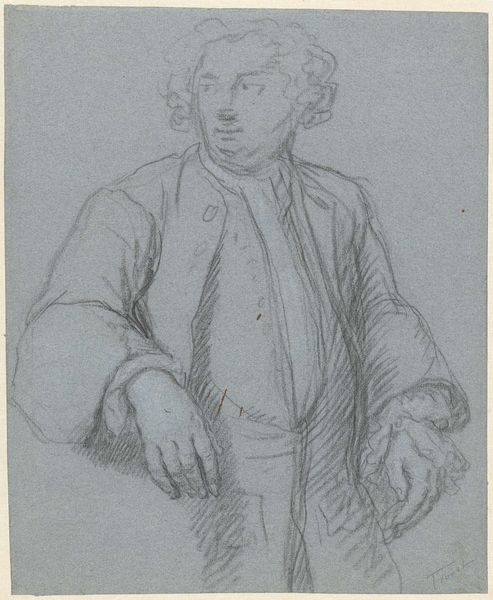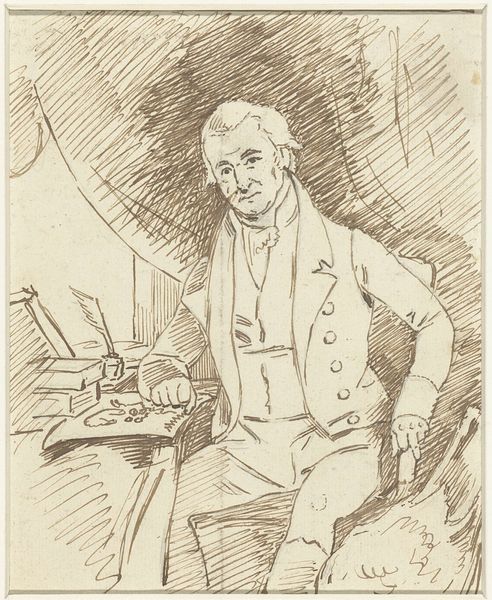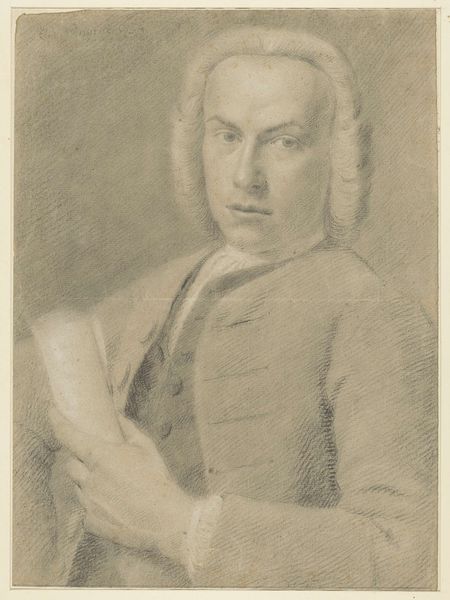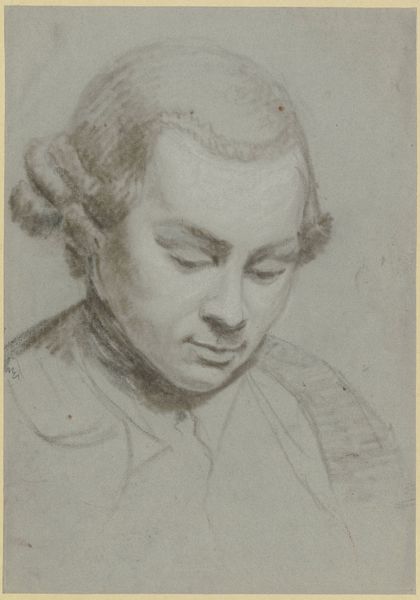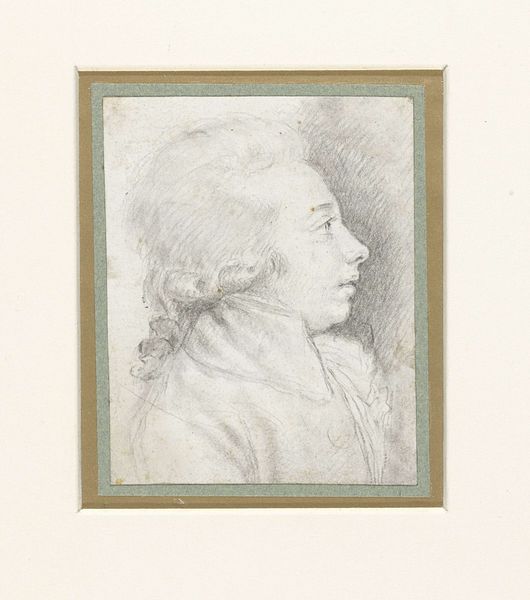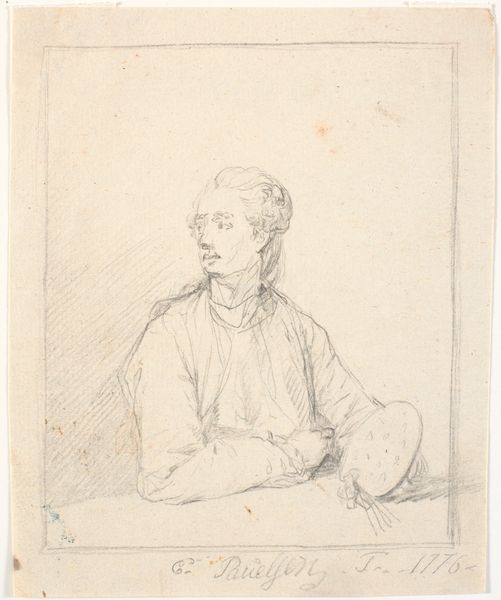
Zelfportret van Tethart Philip Christian Haag 1757 - 1812
0:00
0:00
tethartphilipchristianhaag
Rijksmuseum
Dimensions: height 80 mm, width 65 mm
Copyright: Rijks Museum: Open Domain
Curator: Here at the Rijksmuseum, we have a delicate self-portrait by Tethart Philip Christian Haag, created sometime between 1757 and 1812. Editor: The first thing I notice is the texture of the graphite on the paper, creating soft shadows on the subject’s face. It gives him an almost ghostly presence. Curator: Graphite was becoming increasingly common at the time. It was celebrated for being easily erasable, which fostered a culture of sketch and preliminary studies and further lent itself to intimate works. Haag's self-image exists in the shadow of the French Revolution. His family fortune would later be decimated as the old institutions started to collapse. Editor: Absolutely, but let's consider the direct application of that graphite too. Note the confidence, and quick strokes around his clothing. There's an almost journalistic impulse at play. What labor went into obtaining such materials? Were these new technologies trickling into everyday society at the time? Curator: I agree that the seeming effortlessness is notable, but it's equally fascinating that Haag inscribed the bottom of the drawing with his name and title as "Director of the Drawing Academy." To me, this signifies the increased institutionalization of artistic training at the time. The academy served to set standards, train artists, and legitimize artistic practices. It was also about power. Editor: Interesting, and definitely pertinent to his choice to leave such a mark for future scholars, however his light strokes of material capture a vulnerability often lost on high academia at the time. His eyes almost seem to plead with his contemporary or present gazers, a quality likely resulting from the use of graphite in drawing. Curator: A sensitive reading, indeed! It is tempting to view the piece through a materialist lens; however, this portrait showcases artistic identity formation through institutional position during turbulent political times. The play of shadow in romanticism as it struggles to legitimize its existence and future. Editor: Indeed, perhaps we both shed new light on Mr. Haag's contribution to the artistic landscape in a revolutionary time!
Comments
No comments
Be the first to comment and join the conversation on the ultimate creative platform.

